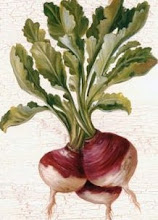 TheTamshee:spent a bright but cold day in the company of a handful of Short Eared Owls on the east coast of scotland. The light conditions were favourable but it can be very tricky capturing these magnificent predators in full flight. They are constantly changing direction while scanning the grassy terrain for a tasty rodent. Check out Tamshee's Photography photostream / Flickr for more of the set
TheTamshee:spent a bright but cold day in the company of a handful of Short Eared Owls on the east coast of scotland. The light conditions were favourable but it can be very tricky capturing these magnificent predators in full flight. They are constantly changing direction while scanning the grassy terrain for a tasty rodent. Check out Tamshee's Photography photostream / Flickr for more of the set
Thursday, January 26, 2012
Short Eared Owl
 TheTamshee:spent a bright but cold day in the company of a handful of Short Eared Owls on the east coast of scotland. The light conditions were favourable but it can be very tricky capturing these magnificent predators in full flight. They are constantly changing direction while scanning the grassy terrain for a tasty rodent. Check out Tamshee's Photography photostream / Flickr for more of the set
TheTamshee:spent a bright but cold day in the company of a handful of Short Eared Owls on the east coast of scotland. The light conditions were favourable but it can be very tricky capturing these magnificent predators in full flight. They are constantly changing direction while scanning the grassy terrain for a tasty rodent. Check out Tamshee's Photography photostream / Flickr for more of the set
Tuesday, January 24, 2012
Red Squirrel @ Whinfell Forest
TheTamshee: spent some quality time strolling the tracks through Whinfell Forest in search of the ever exploring Red Squirrel or Eurasian red squirrel (Sciurus vulgaris) they are a species of tree squirrel which are thriving among the pine trees in this region of the lake district. The red squirrel is an arboreal, omnivorous rodent whose numbers have decreased drastically in recent years, in part because of the introduction of the eastern grey squirrel (Sciurus carolinensis) Check out Tamshee's Photography / Flickr photostream for more sets. Enjoy!!http://www.flickr.com/photos/63793845@N06/sets/
Monday, January 2, 2012
Grey Heron @ Isle Of Mull
Tamshee's Photography's photostream on Flickr.
TheTamshee's: Elegant Grey Heron has plumage that is largely grey over the upper body, and off-white below. The adults have a white head with a broad black supercilium and slender crest, while immatures have a dull grey head. It has a powerful, pinkish / yellow / orange bill, which is brighter in breeding adults. It has a slow motion flight, with its long neck retracted into a S-like shape. This is characteristic of herons and bitterns, and distinguishes the grey heron from storks, cranes and spoonbills, which extend their necks. The call is a loud croaking!! but on my many sighting they tend to be silent and motionless.
Subscribe to:
Comments (Atom)


































